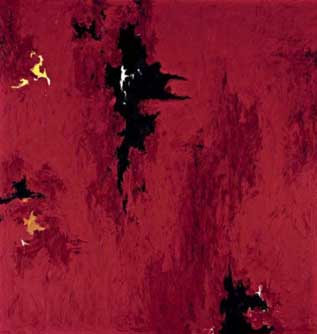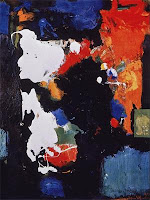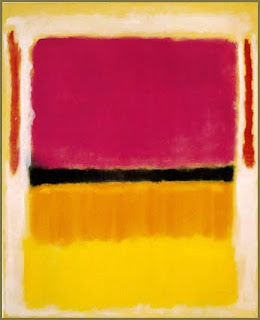Post 5
Abstract art has been inflammatory in fascist, communist, and democratic nations. Interestingly, Americans who disliked Abstract Expressionism blamed a communist conspiracy for its prevalence and the Nazis called it Bolshevist, but the Soviets actually feared it. There was a small group of influential Americans who supported the Abstract Expressionist movement, a small group of antagonists, and the majority of people were completely apathetic. The Rockefeller family, the Central Intelligence Agency, and the
The reason that some Americans feared abstract expressionism was because of two unrelated reasons that they attempted to link. One was that some, but far from many, artists of Abstract Expressionist works had communist leanings. The other reason was that they were just plain disturbed by the works. The disproportional, the psychedelic, the abstract, and the cryptic were all frightening to most Americans who could not understand this new art, for the same reasons it bothered the Nazis. They questioned the skill of the artists because the technical skill needed for representational art was no longer needed. It looked like children could do this art, and this upset Americans who were fearful of the Soviets gaining the lead over them in any field. A loss of artistic talent was devastating. According to Jane de Hart Mathews, “the rejection of traditional forms and the commitment to abstraction that characterized vanguard art seemed to impart to their highly structured world the quality of chaos and the demonic that they so easily identified with communism.” (Art and Politics in Cold War America, page 162) Simply because Abstract Expressionism was “ugly,” that was enough to make it communist in the eyes of people like Senator George Dondero.
Abstract Expressionism was a deeper movement intellectually than representational art. Those viewing abstract art had to solve it because it was like a riddle; the meaning was not explicit. For a citizenry accustomed to traditionalist, realist art, this was not something they were expecting. People had not encountered the avant-garde before on such a scale. For post-World War II conservatives, the rejection of the traditional and the established was treason. This is another reason it was so easily identified with communism, because it ran contrary to established American culture.
This new art also required interpretation, and therefore originality. Some perceived the avant-garde as the efforts of communist traitors trying to force this new art upon an unwilling public, but others, including the CIA and MOMA, saw the potential of the art to champion the individual over the state. In Socialist Realism, the art was so representational that it could only mean one thing, and this was what the Soviets wanted in order to get the party message out to illiterate masses. Educated American capitalists, on the other hand, were capable of producing art that freed the artist from governmental restrictions and even the restrictions of reality itself, with at least a longer version of censorship’s leash than the communists allowed.
Censorship was a hot issue in the 1950’s and 60’s. The Rincon Annex fiasco scored a victory for Refregier’s murals and artistic freedom, because the changes recommended to be made to them failed. The murals were accused of being examples of Socialist Realism, another form identified (correctly) with communism. Whether or not they were Socialist Realism is debatable, since they were historically accurate about the plight of labor and events in
 Mountains and Sea
Mountains and SeaHelen Frankenthaler
Here, Helen Frankenthaler has depicted an abstract scene of mountains adjoining a sea. Discerning either of these things is difficult, especially since there are colors used for the mountains such as red and green, mixed with traditional grey and brown. Interestingly, this painting is so abstract that picturing the mountains from top down as well as a side view is possible. This demonstrates how abstract art can be interpreted, and relies on these interpretations for meaning rather than mimesis, much like a Rorschach test. For some people this art is meaningless, because nothing can be easily discerned. The sea exists as patches of blue without coherence, instead of a single body, and the mountains blend together into an amorphous mass rising out of the center. This landscape does not easily show the titular mountains and sea, and that is why this painting could be frustrating or disturbing to some.
Little Spanish Prison
Robert Motherwell
What exactly is in Motherwell’s painting? It appears like it could be three doors, two of them in a pair. The two conjoined ovals on the right look like a pair of hollow eyes staring within. It does appear frightening, and the title confirms this. This prison is devoid of any detail, a prison for the eyes, withholding stimulation. Since the painting just does not clearly depict anything, the viewer is at a loss of information. What else is going on? In a prison, the prisoner is subjected to the same deprivation about the outside world.
This painting is an example of Abstract Expressionism that does not clearly represent anything. It requires arduous, in depth contemplation to understand. Such contemplation can only be done by the intellectually free, and in this way abstract art is a show of artistic freedom. Others may view it as purely frightening, like a nightmare, but for its own sake and not for its message.
Onement IV
Barnett Newman
Apparently just a white line, Newman’s painting is the epitome of abstraction and simplicity. What this could represent is the single strand of time, the continuity of all that has ever happened, combined into one form, superimposed over the twilight of the abyss. In this, there is a separation between all being one, and oblivion. This separation is emphasized by the line dividing the backdrop in half.
The most obvious criticism to the painting would be “that’s it?” since there is only a line. The “my dog could do that” logic is the strongest argument against such abstraction. But also, total abstraction frees the artist of any responsibility to depict anything in particular. There can be no objection to the subject matter because it is indescribable. The only objection is due to how simple it really is.
R-no. 1
Clyfford Still
Another totally abstract painting, there is not even a title to explain what the representation could be. There is mostly crimson, with dashes of orange yellow, and what appear to be holes eaten through the reddish areas. It almost resembles paper degraded by insects. This painting recently went for over $21,000,000 at auction, which is totally inexplicable to most people. A painting that does not clearly represent a subject seems like it could not possibly be worth so much money, especially since many think they can make art of the same quality. Some could contend that the high price of Still’s work is evidence of a lack of taste on the part of art critics. But this is more strongly evidence of artistic freedom in a capitalist economy, where artists are free to produce what they like and the cultural value of the work is represented by its monetary worth to museums and collectors.

Hyena Stomp
Frank Stella
Frank Stella’s painting of a squared spiral appears to have more order than it actually does. The colors of the segments change randomly, sometimes as a gradient into a similar color, sometimes an abrupt shift. However, the colors do proceed in the same order when looking closely. Inevitably the viewer will follow this spiral, either inward or outward, as it is the only thing to focus on. The effect is somewhat hypnotic. Disappointingly there are no hyenas as the title implies.
This is another example of Abstract Expressionist art that is nonrepresentational and cryptic. This is frightening to those who “just don’t get it,” as well as a triumph of the individual, in the form of the artist as well as the viewer who is free to interpret the art, or to dismiss it.




-white-center-(small).jpg)





























